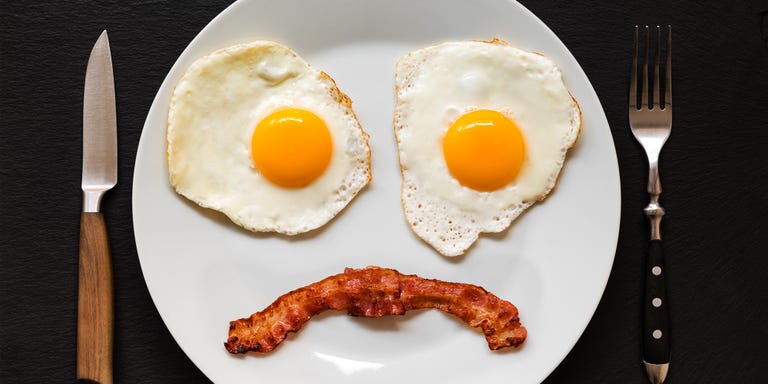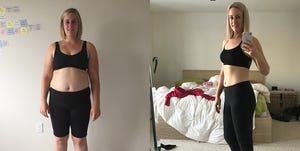

“I can’t wait to start this new diet that will make me feel absolutely horrible at first,” said no one, ever.
Unfortunately, that’s kind of what you sign up for when you start the keto diet. That totally miserable feeling is actually called the “keto flu” and it’s basically a bunch of flu-like symptoms that often appear at the beginning of a keto diet overhaul (because, you know, starting a new diet isn’t hard enough).
So before you run to the grocery store to stock up on protein and healthy fats galore, listen up: Chowing down on all that thick-cut bacon might come with some unpleasant side effects in the beginning—here’s what to look out for.
What is the keto flu and why does it happen?
First of all, it’s not really the flu (as in influenza), but the symptoms are similar: headache, fatigue, body aches, dizziness, and nausea.
“These symptoms occur because your body is getting used to the effects the diet is having on your body,”says Amy Gorin, R.D.N., owner of Amy Gorin Nutrition in the New York City area.
She’s referring to a process called ketosis, which happens when the body starts burning fat for energy instead of using carbs. Carb withdrawal (yes, that’s a thing) is what makes you feel so miserable during this time period, says Beth Warren, R.D., founder of Beth Warren Nutrition and author of Living A Real Life With Real Food.
Carbs are quick energy, so without them you feel sluggish, but they’re also a good source of fiber, and missing out on that can lead to stomach issues. “Some of these symptoms may pass within 24 to 48 hours of starting the ketogenic diet, but some may take up to two weeks to go away,” says Gorin.
Another similarity between the keto flu and the actual flu: its symptoms vary from person to person. Some people only have mild symptoms while others feel much more ill, and some people recover quickly while others wait weeks to feel like themselves again.
That sounds…awful. Can I prevent the keto flu?
If you’re interested in trying the keto diet, don’t rush the process. “Slowly decrease your carbohydrate intake while slowly increasing your dietary fat intake, changing [more gradually] from a high-carb to a low-carb diet,” says Gorin.
And while planning meals ahead of time is a good strategy for any diet, it’s especially true if you’re gearing up for keto, since it’s going to put your body through some major changes.

“Plan to stay hydrated and include plenty of fiber-rich vegetables in your diet to reduce the likelihood of constipation,” says Gorin. (The increase in fatty foods combined with the decrease in fruits and vegetables found in high-protein diets is a well-known recipe for GI backup.)
Gorin also recommends getting an expert opinion, since the keto diet is such a transition: “Have a registered dietitian make a meal plan for you so you have a specific plan of action.” (You can find one in your area at Eatright.org.)
Okay, but what if I already started the keto diet and feel terrible?
If you dove head-first into keto and are now feeling…ugh, there are some things you can do to lessen the symptoms if you’re willing to be flexible. Think: letting yourself have a few more carbs than a typical keto diet would allow or cutting back on eating all the fats right away.
It’s kind of a two-steps-forward, one-step-back approach—bringing your diet closer to where it was can help you feel better, and, in turn, help you continue on your keto journey at a slower (read: less miserable) pace.
But if you’re not willing to add even a few more carbs back into your diet, take comfort in the fact that the keto flu is temporary—just don’t say I didn’t warn you.
Source: Read Full Article